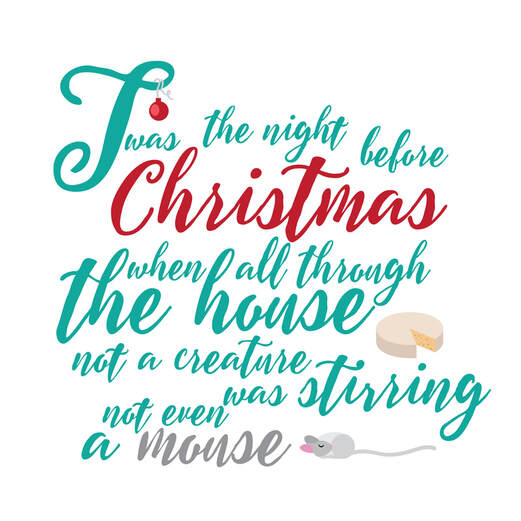|
For over 70 years, NORAD (North American Aerospace Defence Command) have been tracking Santa Claus each Christmas Eve, as he travels from the North Pole to all countries of the world on Christmas Eve. The origins of this are shrouded in the myseteries of time but what we do know is that back on Christmas Eve, 1948, The United States Air Force issued a communique stating that an 'early warning radar net to the north' had detected 'one unidentified sleigh, powered by eight reindeer, at 14,000 feet, heading 180 degrees'. Associated Press pass this 'report' to the general public and was intended as a one off event.
Then one enterprising member of Colonel Shoup's staff used a picture of Santa on the board to track unidentified aircraft, that December. Shoup contacted CONAD's public affairs officer Colonel Barney Oldfield and between them, they contacted the press to tell them that 'CONAD, Army, Navy, and Marine Air Forces will continue to track and guard Santa and his sleigh on his trip to and from the U.S. against possible attack from those who do not believe in Christmas' But, running a hotline takes an awful amount of people and the phone lines are staffed by volunteers with reports of around 40 calls per hour, per person and the team dealing with over 12,000 emails and 100,000 telephone calls from more than two hundred countires and territories. Bearing in mind that this tracker doesn't open until Christmas Eve, the pones are normally manned for 20 hours starting at 4am, finishing at midnight MST on Christmas Day. To give you an idea of the size of the opperation, in 2015, 1,200 US and Canadian military personnel volunteered to staff the phone lines. By 2018 this had risen to 1,500 volunteers and by 2019, the wonderful noradsanta.org website had received 8.9 million visitors.
NORAD Santa Tracker, online noradsanta.org has been up and running on the internet since 1997 at the dawn of commercial internet sites. If you visit during January to the end of November you are greeted with a message to come back on 1st December. From the 1st, the website has information on the Santa tracker, games and other activities. Once it gets to 24th December in the site chanes to show Santa's journey with mini videos at world-wide landmarks. What is amazing is that the Santa tracker is run by volunteers and corporate sponsorship. It received no money from US or Canadian taxpayers.
0 Comments
Whilst this may have fallen out of favour and children are given their presents at home, the idea behind a centralised group or charity doing this is very much in the spirit of Saint Nicolas of Myra's secret gift giving. Because where you have children who have nothing, this way, they would get a present But behind the random acts of kindness in Saint Nicolas of Myra's history, we now have a Father Christmas or Santa Claus who has lists of naughty or nice children where those on the bad list get lumps of coal. For me, I like to think of a few years ago when I helped to wrap up presents at the local Salvation Army. These were being given to families who really have nothing at Christmas. All said that they were from Father Christmas. For those children who have nothing, a present that their parents didn't have to worry about affording, was literally a God send.  Whilst Christmas has become commercialised, so has Father Christmas. A Visit from St. Nicolas by Clement Clarke Moore, published in the early 1820s, brings us the idea of reindeer and also names them. And as this idea of the personification of Merry Christmas merged with the man in the red suit, so he starts to appear in commercials. By1931, Coca-Cola commissioned ilustration Haddon Sundblom to paint Sanata for Christmas adverts and the trend was born. In 1939, Montgomery Ward, a Chicago based department store commissioned ad man Robert L. May to create a colouring book as an instore holiday giveaway. The book; Rudolph the Red-Nose Reindeer inspired the Jonny Marks song of the say name. May was Mark's brother-in-law.
In the same article that I've linked about Montgomery Ward, the author suggests you search Santa and cigarette ads on google. Don't. You will be horrified to see the number of times Santa was used to promote smoking. Amongst all the commercialism, I'm reminded of a couple of years ago when I went to the local Salvation Army and wrapped up presents for families who literally had nothing at Christmas.
These gifts, for their children, were marked as from Father Christmas and embodied the real spirit of Saint Nicolas, giving secretly to people who need it. Today, was a Spa day, a present from work for our team after completing a massive project. I was all warm and relaxed from my massage, snuggled in my complimentary robe, knitting and doing my other favourite activity, in these situations; listening to snatches of conversations. The two ladies, opposite we’re talking about Christmas and work secret Santas. One of them asked if the other if they knew of this German tradition where you take a nice, unwanted gift, wrap it and then you play a game to see who will get which gift.
Of course, there is nothing stopping you from creating your own rules to fit who you are playing with.
|
Why the Christmas Lace Notes?2023 has come along and this is the second year of my lace notes. All kicks off on 15th November with the first of this year's Chrismas movies. One a day, every day until Christmas. Archives
December 2023
Categories
All
|







